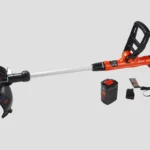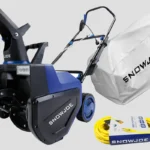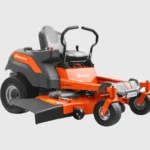Pruning is not just a chore; it’s an art that keeps your garden thriving. It’s about making smart cuts to help your plants blossom and bear fruit. Choosing the right tools isn’t just about shopping; it’s about crafting the future of your garden.
Let’s dig into the essentials of pruning tools, ensuring your garden is not just surviving, but thriving.
Understanding Pruning Tools
Hand Pruners (Secateurs)
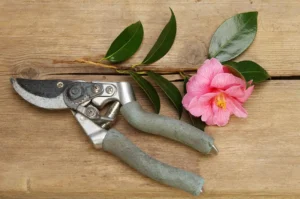
These are the gardeners’ daily drivers. Whether it’s bypass pruners, which work like scissors, or anvil pruners, which cut against a flat edge, each has its place.
For those who value reliability and comfort, Felco and ARS brands stand out. They’re not just tools; they’re investments in your garden’s future.
Loppers
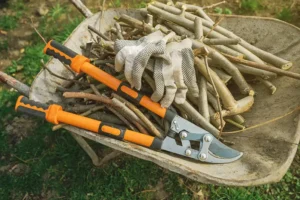
Need a bit more oomph? Loppers take it up a notch, giving you the leverage to tackle thicker branches. They’re like the hand pruners’ big brother, with longer handles to make cutting less of a workout. The Corona ComfortGEL loppers, for instance, offer a blend of comfort and power, perfect for turning tough cuts into easy snips.
Pruning Saws
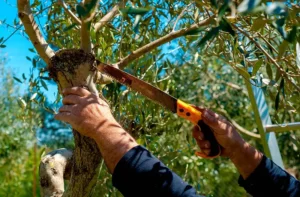
When branches get too thick for loppers, a pruning saw is your next best friend. Available in various styles like bow, folding, or pole saws, they’re designed to handle the bigger jobs. Brands like Silky are celebrated for their durable blades and ergonomic designs, which transform daunting tasks into manageable ones.
Hedge Shears
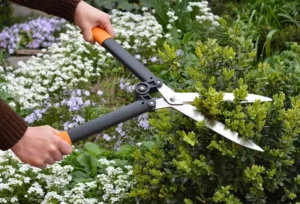
Perfect for giving hedges and bushes that neat, manicured look. Long blades help sculpt precisely, while ergonomic handles reduce fatigue, making your gardening feel less like labor and more like sculpture. Tools like the ARS HS-KR1000 are revered not just for their cutting ability, but for turning hedge trimming into a form of artistry.
Specialty Pruning Tools
Pole Pruners
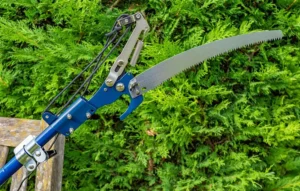
These are the giraffes of the pruning world, allowing you to reach high branches safely from the ground. With various attachments like saws or loppers on an extendable pole, they keep you off ladders and in safety’s embrace. Fiskars offers models that are adjustable and easy to handle, making high-up pruning a breeze.
Electric Pruners
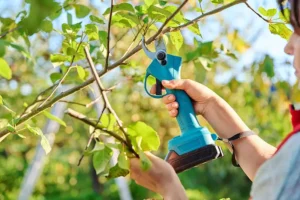
For those looking for a little less manual labor, electric pruners can be a game-changer. They combine power with precision, cutting through thick branches without the strain. Look into the Scotts Outdoor Power Tools for a cordless experience that makes pruning as easy as pressing a button.
Grafting Knives
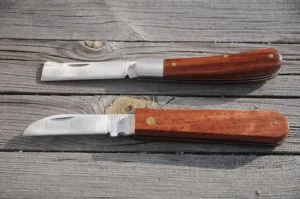
These aren’t your ordinary knives; they’re precision tools for specific tasks like grafting and budding, essential for propagating your favorite plants. The Zenport grafting knife is a standout, known for its precise cuts that ensure successful grafts. It’s more than a knife; it’s a key to expanding your garden.
Pruning for Different Plants
Roses: With their delicate blossoms and thorny challenges, roses demand precision. Bypass pruners are your best bet here, allowing for clean cuts that promote healthy growth. Remember, it’s not just about making cuts; it’s about sculpting beauty.
Fruit Trees: Loppers come into play for their thicker branches. A clean cut not only prevents disease but also encourages fruitful outcomes. It’s like setting the stage for next season’s harvest.
Ornamental Shrubs: Here, hedge shears shine. They keep your topiaries and shrubs in ideal shape, turning your garden into a living sculpture gallery. It’s about aesthetics as much as plant health.
Maintenance and Care of Pruning Tools
- Cleaning: After each use, clean off any sap or residue. A simple wipe down can prevent disease spread and keep your tools ready for the next use.
- Sharpening: Dull tools can harm your plants. A few strokes with a sharpening stone can keep your blades ready for a clean cut, every time.
- Storage: Dry, organized storage prolongs tool life. It’s like tucking your tools into bed, so they’re fresh for a day’s work.
Advanced Pruning Techniques
- Thinning: This technique involves removing select branches to enhance air and light penetration. It’s like thinning a crowd to give everyone a better view.
- Deadheading: Removing spent flowers encourages plants to focus energy on growth and future blooms. It’s akin to cutting losses for greater gains.
- Topping: Although controversial, reducing the height of a tree can be beneficial under the right circumstances. Think of it as setting boundaries for growth.
Choosing and using the right pruning tools is more than a gardening task; it’s a way to connect with nature and care for your living landscape. With the right tools and techniques, you’re not just pruning branches; you’re nurturing your garden’s future.

Matthew Dowell
Matthew, a seasoned builder from a family of craftsmen, leads Tools Trove. His passion for tools and decades of hands-on experience fuel his commitment to providing expert reviews and insightful content. Whether you’re a pro or a DIY enthusiast, Matthew’s guidance ensures informed decisions in the world of tools.


